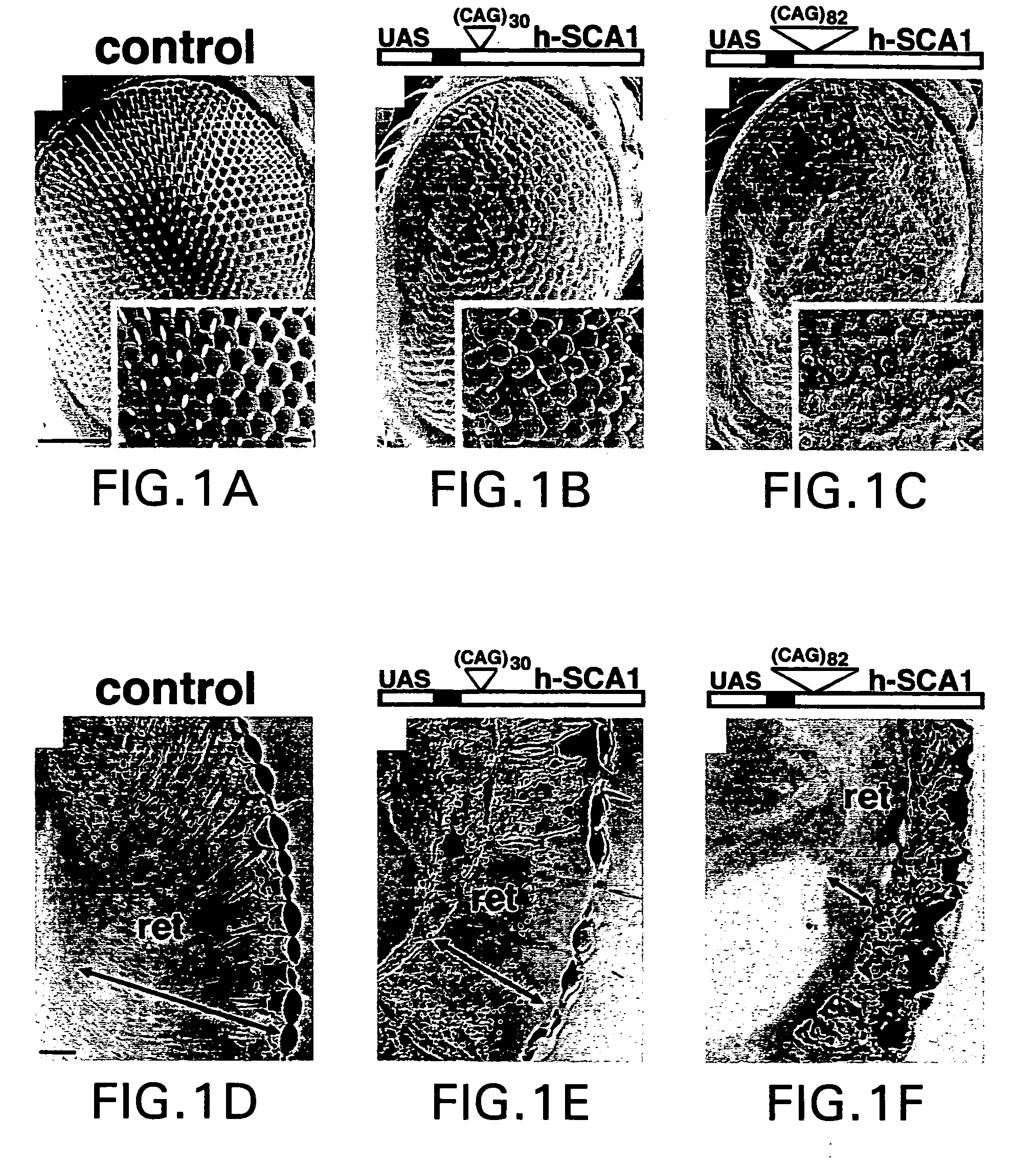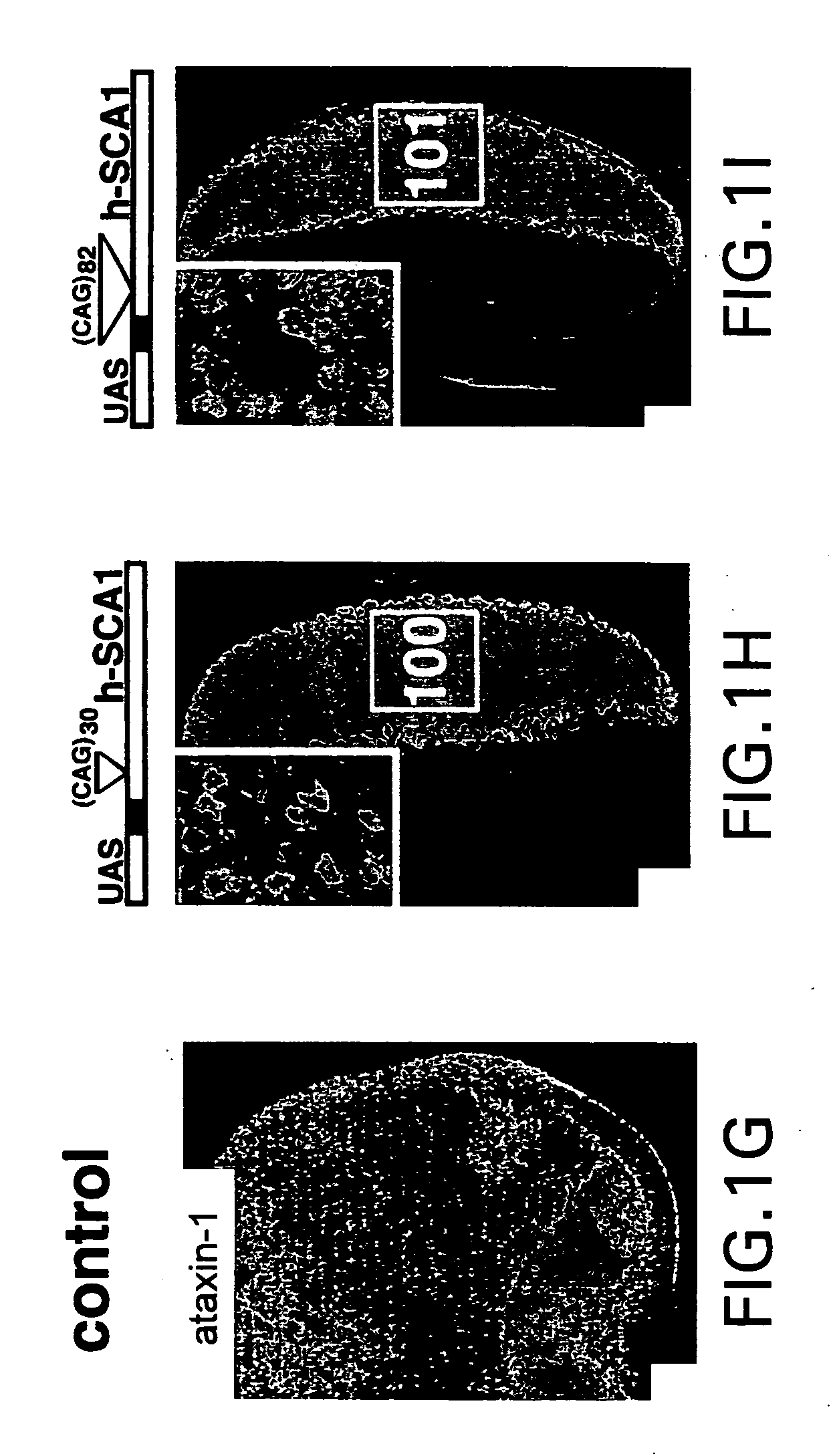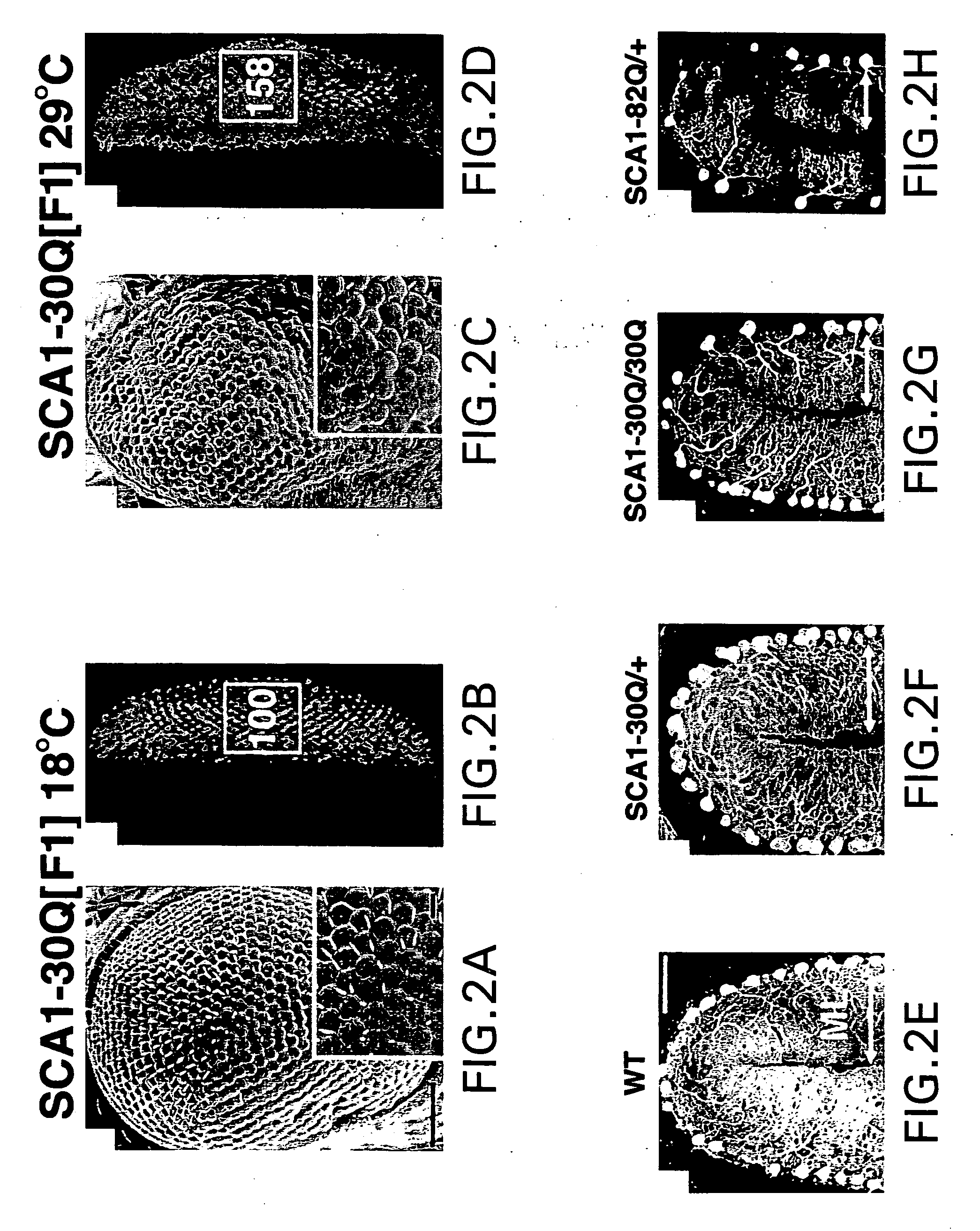Methods and compositions for the identification and treatment of neurodegenerative disorders
a neurodegenerative disorder and composition technology, applied in the field of drosophila models of neurodegenerative disorders, can solve the problems of death and, ultimately, demise, and achieve the effects of facilitating in vivo pharmacologic screening, and facilitating in vitro pharmacologic screening
- Summary
- Abstract
- Description
- Claims
- Application Information
AI Technical Summary
Benefits of technology
Problems solved by technology
Method used
Image
Examples
second embodiment
[0104] In a second embodiment, a related method of directed misexpression in Drosophila is used, that makes use of a tetracycline-regulated gene expression from E. coli, referred to as the "Tet system". In this case, transgenic Drosophila driver lines are generated where the coding region for a tetracycline-controlled transcriptional activator (tTA) is operably fused to promoters / enhancers that direct the expression of tTA in a tissue-specific and / or developmental stage-specific manner. Also, transgenic Drosophila target lines are generated where the coding region for the gene of interest to be misexpressed (e.g., an ataxin-1 gene) is operably fused to a promoter that possesses a tTA-responsive regulatory element. Here again, misexpression of the gene of interest can be induced in progeny from a cross of the target line with any driver line of interest; moreover, the use of the Tet system as a binary control mechanism allows for an additional level of tight control in the resulting ...
third embodiment
[0129] In a third embodiment, loss of function phenotypes are generated by double-stranded RNA interference. This method is based on the interfering properties of double-stranded RNA derived from the coding regions of genes. Termed dsRNAi, this method has proven to be of great utility in genetic studies of the nematode C. elegans (see Fire et al., 1998, Nature 391:806-811) and, more recently, in genetic studies in Drosophila, both during embryogenesis (see, e.g., Kennerdell et al., 1998, Cell 95:1017-26) and during later development (Lam and Thummel, 2000, Curr Biol 10(16):957-63). In a preferred embodiment of this method, complementary sense and antisense RNAs derived from a substantial portion of a gene of interest are synthesized in vitro. Phagemid DNA templates containing cDNA clones of the gene of interest (i.e. a SCA-1 modifier gene) are inserted between opposing promoters for T3 and T7 phage RNA polymerases. Alternatively, one can use PCR products amplified from coding region...
PUM
| Property | Measurement | Unit |
|---|---|---|
| Dynamic viscosity | aaaaa | aaaaa |
| Antisense | aaaaa | aaaaa |
| Heat | aaaaa | aaaaa |
Abstract
Description
Claims
Application Information
 Login to View More
Login to View More - R&D
- Intellectual Property
- Life Sciences
- Materials
- Tech Scout
- Unparalleled Data Quality
- Higher Quality Content
- 60% Fewer Hallucinations
Browse by: Latest US Patents, China's latest patents, Technical Efficacy Thesaurus, Application Domain, Technology Topic, Popular Technical Reports.
© 2025 PatSnap. All rights reserved.Legal|Privacy policy|Modern Slavery Act Transparency Statement|Sitemap|About US| Contact US: help@patsnap.com



